Babar: King of the Elephants (1999) is an animated film adaptation of Jean de Brunhoff’s popular children’s books. Written and directed by Raymond Jafelice the story tells the tale of Babar who witnesses his mother killed by poachers. Babar manages to escape and leaves the jungle (an unnamed fictitious South African jungle) , visits the city and becomes “civilised”. He then returns to the jungle to bring the benefits of civilization to his Proboscidean brethren. Like many dictators before him, Babar the elephant was groomed by a western force before becoming leader of his people and encouraging them to adopt the more “civilised” ways of his Western teachers. When we first are introduced to Babar, at the beginning of the film, he acts as one might expect an elephant to act, walking on all fours and naturally, not wearing any clothes. By the end of my chosen scene Babar is a fully anthropomorphised elephant. The scene that I have chosen to focus on is a montage / song sequence which portrays this metamorphosis of Babar from naked simpleton to an educated and upstanding (literally on two legs) model of societal behaviour.
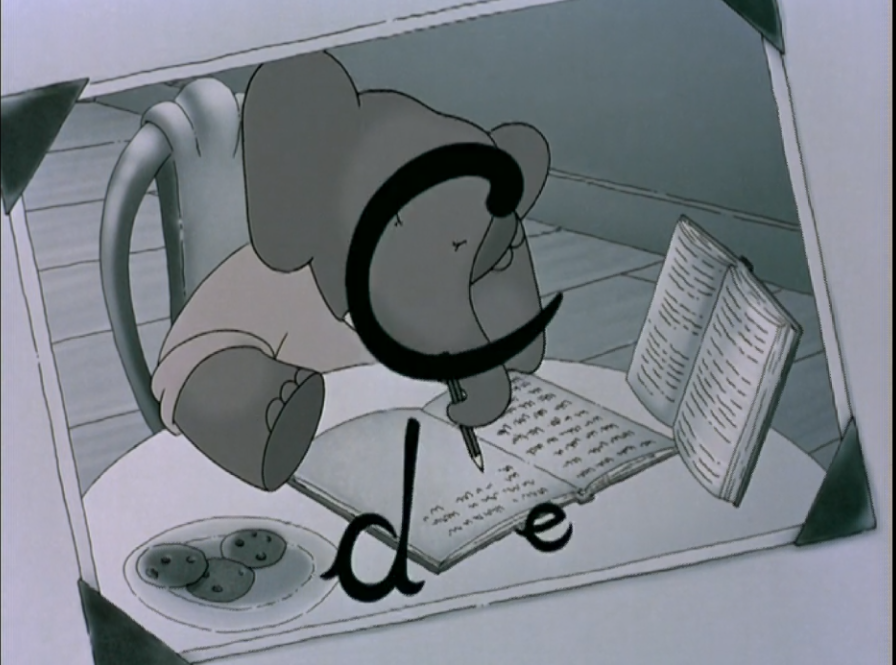
Figure 1 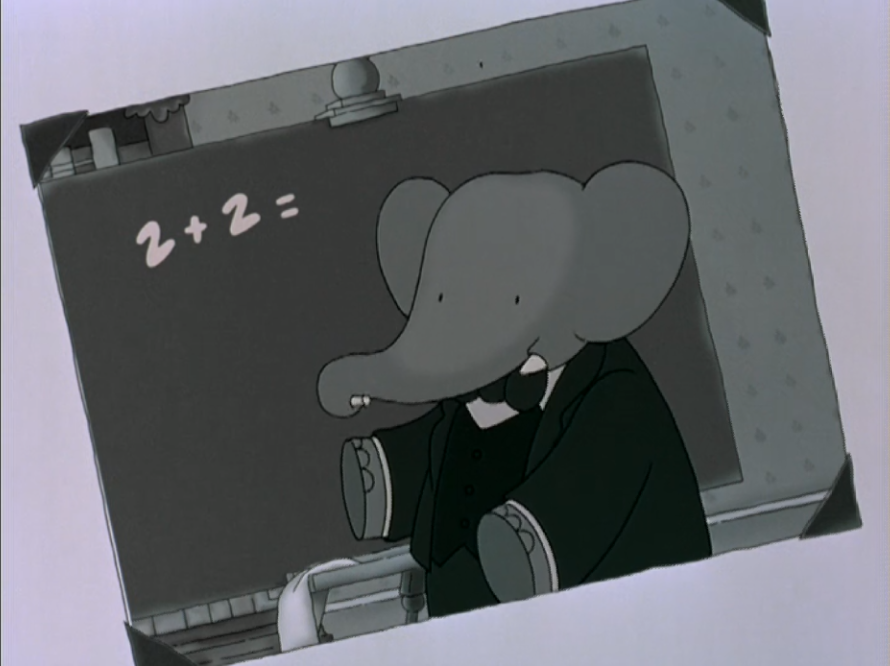
Figure 2
Being a children’s film it is of course a colourful animation and the scene is accompanied by a jaunty non-diegetic song we see Babar the elephant (the wild animal representing South African native) being educated by Madame (the quaint old lady who represents the French colonial influence). Throughout this scene we see Babar reminiscing with Madame about the education she has provided him as he has grown from adolescence to a mature elephant. We see Babar being educated in literacy (figure 1) and numeracy (figure 2) the mise en scene is all relevant to this education of Babar as can be seen in these images.
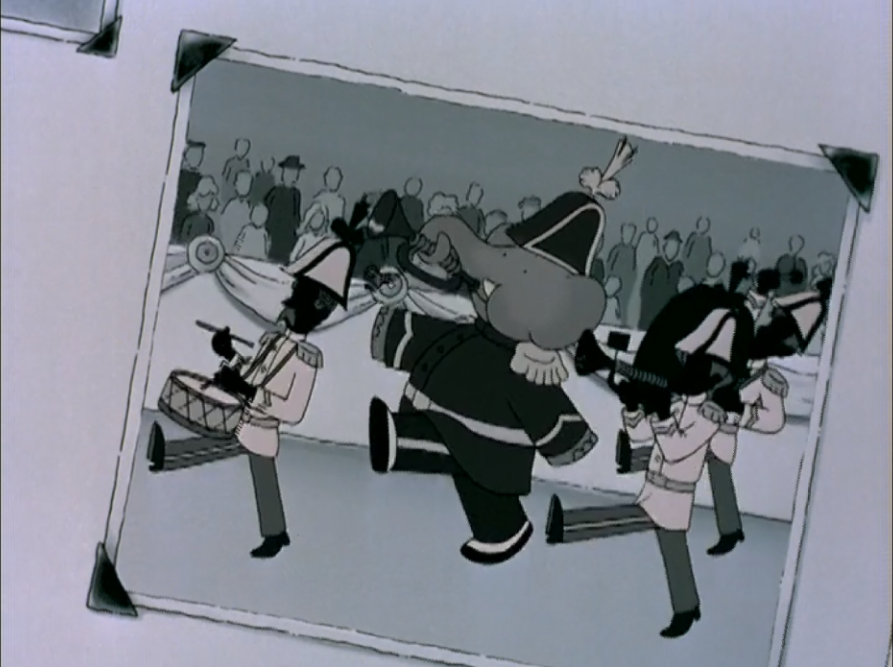
Babar scribbles in a notebook as letters fly toward the screen and then he stands in front of a chalkboard as he works on a mathematical equation. It’s not just an education in literacy and numeracy that Babar receives however. We also see Babar parading in full military garb (figure 3) this is not only interesting in the colonial context of the film but also to the military representation of elephants, such as Colonel Hathi in Disney’s The Jungle Book (figure 4) but also the real life war elephants used as far back as 1000 BC (figure 5) Another key shot in this scene is when we see Babar sat drinking tea with Madam (figure 6) this image highlights the anthropomorphism of Babar, to sit and enjoy high tea is a level of sophistication only the most educated and well mannered members of society could hope to appreciate. This light hearted mimicry of colonialism is perhaps a nod at France’s continued celebrations of its colonial past in 2011 France celebrated its overseas territories with a year-long celebration of France’s overseas territories (la France d’outre-mer) which included a month-long Jardin en outre-mer where spectators could “visit” the cultures of these far-flung corners of the republic.
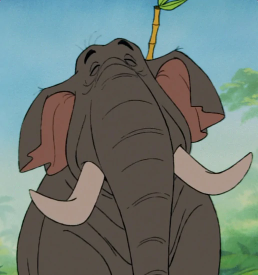
Figure 4 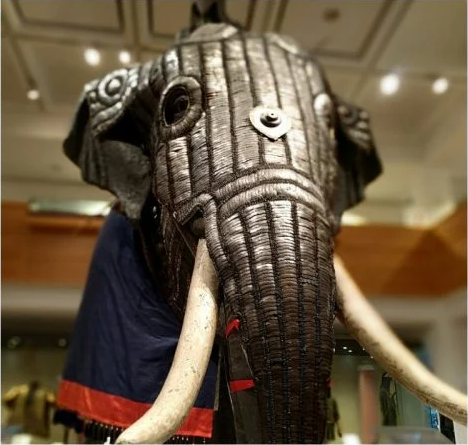
Figure 5 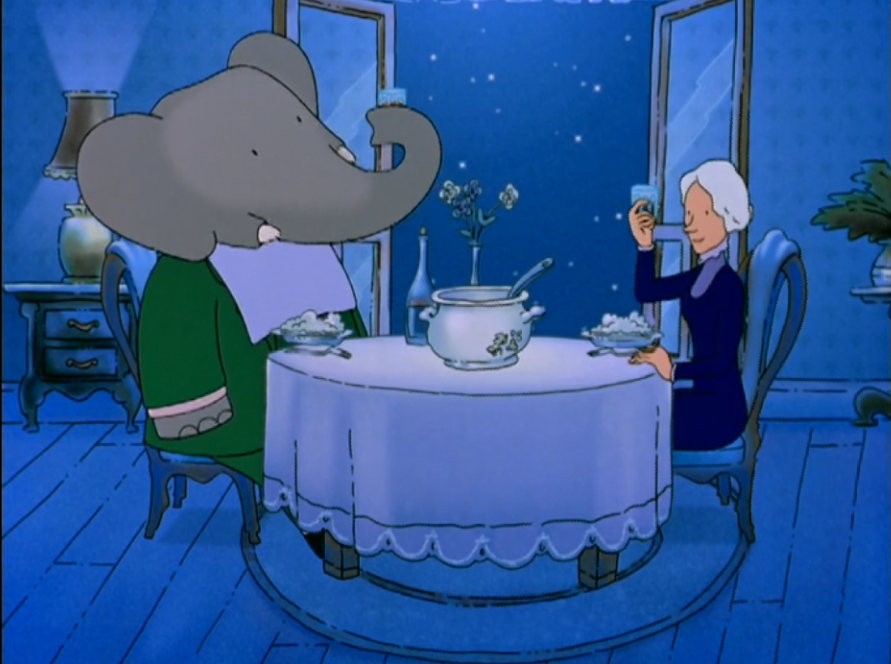
Figure 6
Bibliography
Davies. Nicholas J.S, ‘35 countries where the U.S. has supported fascists, drug lords and terrorists’, Salon, 2014, <https://www.salon.com/2014/03/08/35_countries_the_u_s_has_backed_international_crime_partner/> [Accessed 20 April 2020]
Kistler. John, War Elephants, (Westport CT: Praeger publishing, 2006)
Malarte-Feldman. Clare-Lise, ‘Babar and the French Connection: Teaching the Politics of Superiority and Exclusion’, Critical Perspectives on Postcolonial African Children’s and Young Adult Literature, ed by. Meena Khorana (London: Greenwood Press, 1998)